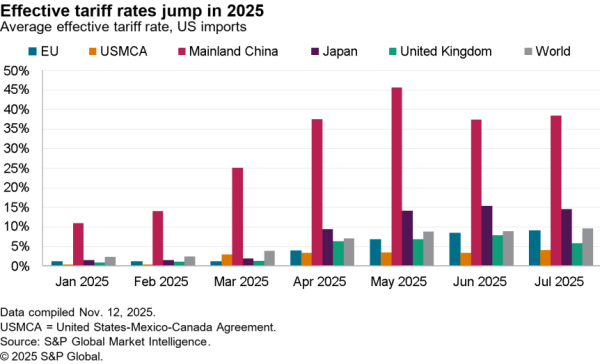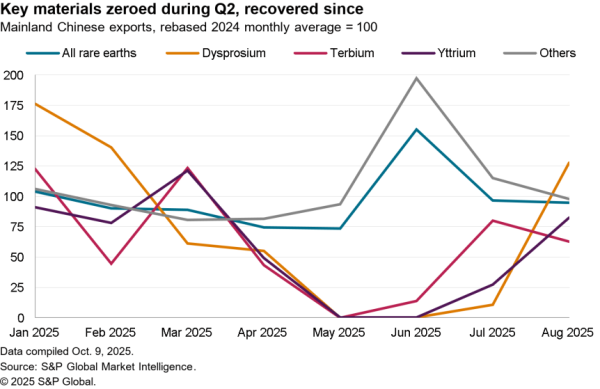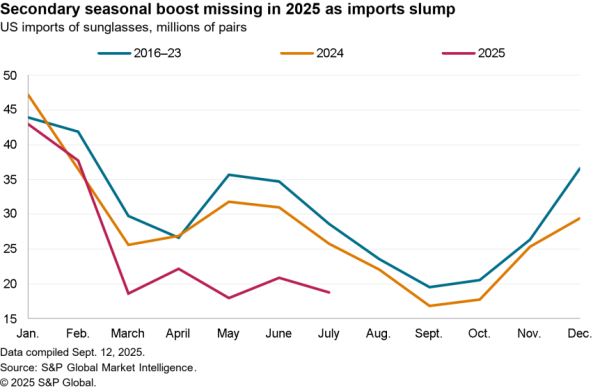Global trade policy in the past four years has been roiled by the actions of the Trump administration. The U.S. general elections in November will determine what the complexion of U.S. involvement in the policies behind global trade will look like.
It should be borne in mind, however, that under either main party candidate – President Donald Trump and former Vice President Biden – trade policy has little to do with trade and everything to do with employment and geopolitical rivalry. There are five broad areas where the candidates varied positions may impact upon trade policy.
Everyone loves jobs
Both campaigns have featured a significant focus in policy relating to employment with implications for trade policy.
The Trump campaign’s second-term agenda includes 50 commitments including six items connected to trade policy including: enact fair trade deals that protect American jobs; “Made in America” tax credits; and four items focused on repatriating manufacturing jobs from China. The Trump administration’s first term has been defined by a focus on addressing the linkage between the trade deficit and U.S. manufacturing. Arguably that was a driver of the renegotiations of NAFTA (signed as USMCA), KORUS (South Korea) as well as the purchasing commitments of the phase 1 trade deal with China.
The Panjiva’s analysis of the latest official figures shows that U.S. exports dropped by 11.2% year over year in the 12 months to August 31 and were just 0.6% higher compared to calendar 2016, though it’s worth noting that the COVID-19 pandemic likely drove a 29.5% drop in exports in Q2. Imports meanwhile fell by 8.0% year over year and rose by 4.8% compared to 2016. As a result the trade-in-goods deficit in the 12 months to Aug. 31 reached $830.7 billion compared to $736.9 billion in 2016, an increased of 12.7%.
The campaign of former Vice President Biden meanwhile has outlined a “Made in All of America” manufacturing support strategy that will use a mixture of: tighter federal procurement rules; tax based measures including clawback of tax credits for manufacturers moving overseas; and includes a carbon border-adjustment fee. The plans include measures to onshore supply chains in “critical” industries including medical supplies and semiconductors with a 100-day plan promised.

Source: Panjiva
Tough on China
Both candidates have pledged to be tough on China from a geopolitical perspective, as already outlined in Panjiva’s Q3’20 Outlook. President Trump appears clearly committed to a continuation of the current pattern of pressure expressed by both continued tariffs as well as a series of sanctions against Chinese firms and limitations in access to U.S. technology.
The big question in terms of supply chain planning is whether the phase 1 trade deal can continue in its current form. Both parties committed to do so at the first six monthly review. Yet, apparent commitments to decoupling from President Trump may put it at risk.
Furthermore, it is increasingly apparent that, outside of agriculture, China has not been sticking to its purchasing commitments. Panjiva’s analysis shows that as of July there was a shortfall of $43.8 billion year-to-date with purchases in July alone reaching $6.33 billion versus $11.9 committed.
The Biden platform similarly advocates a tough-on-China stance, with Biden stating he views “China kind of as a competitor” though he also advocates that “we have to strengthen our relationships and our alliances in Asia.” according to Fox News.
Biden’s campaign has also stated an aim to use the rivalry with China as a spur to increase investment in R&D, education, sustainability and other long-term measures. An immediate end to tariffs shouldn’t be counted upon, however. Vice President Biden’s foreign policy advisor, Tony Blinken, has stated that “we would use tariffs when they are needed but backed by a strategy” according to Inside Trade.

Source: Panjiva
Tackling Transatlantic tensions
Blinken has also stated that a Biden administration would look to “improve our economic relations” with the EU and end an “artificial trade war“, the Financial Times reports.
There are four major areas of conflict between the EU and U.S. that have developed under the Trump administration: aerospace subsidies; digital services taxes; carbon border taxes; and national-security tariffs in the metals industry.
The Trump administration has Trade Promotion Authority on the books to negotiate a full trade deal with the European Union. So far only a modest deal covering fisheries and a handful of consumer goods has been signed. Differences on aerospace subsidies could be addressed but are caught up in the currently-defunct World Trade Organization process.
The issues of digital services taxes – where the Trump administration has held tariffs in abeyance until January – and carbon border taxes would likely be less tractable and may prevent a wider trade deal. In any event the French government has previously stated that the U.S. absence from the Paris Agreement on climate change would preclude the ratification of a deal.
By contrast the trade aspects of carbon emissions may provide a joining point between a Biden administration and the EU, particularly if Biden chooses to bring the U.S. back into the Paris Agreement. A multilateral approach may also lead a Biden administration to focus on solving digital services differences at the OECD level.
The steel and aluminum industries may provide an early area of rapprochement between the two sides. Section 232 duties have contributed to a 20.3% drop in U.S. seaborne imports of steel and aluminum from the EU in the 12 months to Aug. 31 compared to 2017.
In terms of leading EU exporters to the U.S. of steel and aluminum the drop has been fastest for ArcelorMittal and Vallourec with shipments linked to the firms down by 60.9% and 51.8% respectively over the same period.
Steel specialists ThyssenKrupp and SSAB experienced similar declines of 30.1% and 30.5% respectively. The outlier was aluminum-focused Norsk Hydro with an expansion of 27.4%, though that was mostly related to growth in 2018 since when there has been a steady decline.
A system reformed to better deal with the carbon emissions aspects of the sector is possible. Steel producing states are critical to the election though, so Biden may be unable to make commitments before the elections.
Finally, a renovation of the Transpacific Trade and Investment Partnership ( TTIP) is possible, particularly given it was negotiated to completion by the Obama administration. However, Biden would only have Trade Promotion Authority until July, making the complexion of Congress important for the direction of trade policy too.

Source: Panjiva
Multi- versus bilateral
Aside from the big-two relations there are also likely differences between the two candidates attitudes towards signing deals elsewhere. One area of differentiation is with the U.K. The Trump administration has negotiations, reportedly well into the text phase, under the TPA process. Biden by contrast has warned that the passage of the Internal Markets Bill (IMB) by Prime Minister Johnson’s government could jeopardize a deal if it results in a hard border between Ireland and Northern Ireland.
The Trump administration would likely continue with existing in-depth negotiations with Brazil and Kenya, the latter being a template for other bilateral deals across Africa. A Biden government meanwhile may be more focused on multilateral deals, potentially including CPTPP in Asia – the predecessor of which was negotiated by the Obama administration.
Whether there’s a Biden or Trump administration, the issue of the future of the WTO needs to be resolved. The Trump administration has already provided a path to resolving its concerns regarding the dispute settlement process though that may require painful concessions from China and developing countries. The Biden campaign does not appear to have a stated policy on WTO reform, though the former Vice President has historically supported the body and drawn attention to the historic use the U.S. has made of WTO appeals as well as its usefulness in dealing with alleged Chinese violations of WTO rules.
Reshoring, starting with healthcare
As flagged already both candidates have outlined clear commitments to reshoring jobs in manufacturing. Both sides have also outlined plans for onshoring manufacturing of medical supplies in the wake of COVID-19. Both sides are likely to also focus on specifically reducing the dependence on shipments from China.
Panjiva’s U.S. seaborne data shows that imports of pharmaceuticals from China were among the first to accelerate during the pandemic, with a 73.7% sequential surge in daily average imports in April and a 34.2% increase in May. Since then though they have declined with a 24.6% drop in the first half of September. Shipments from Indian meanwhile were late to increase – they actually fell by 32.6% in May, but have since accelerated and rose by 12.6% in the first half of September.
Generally though the rate of imports has varied significantly through the pandemic period, with imports first topping out in July before rising again in August and then dipping once more in September. A stronger domestic supply chain for pharmaceuticals may help stabilize availability across drug classes.

Source: Panjiva




